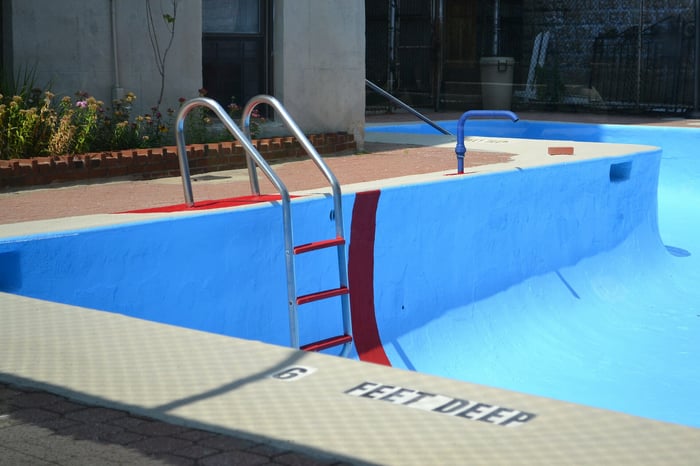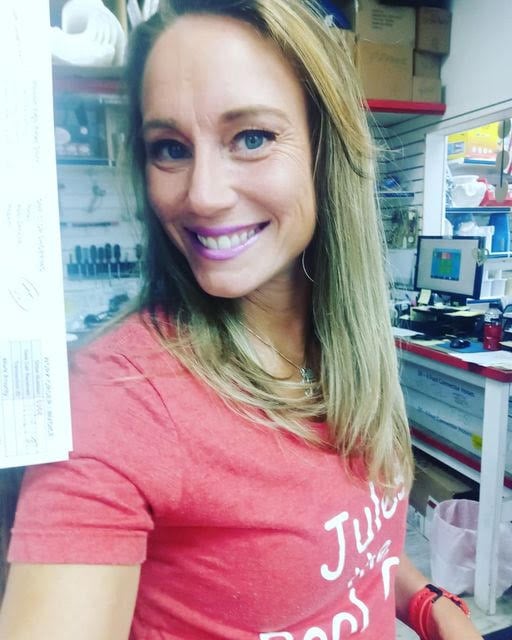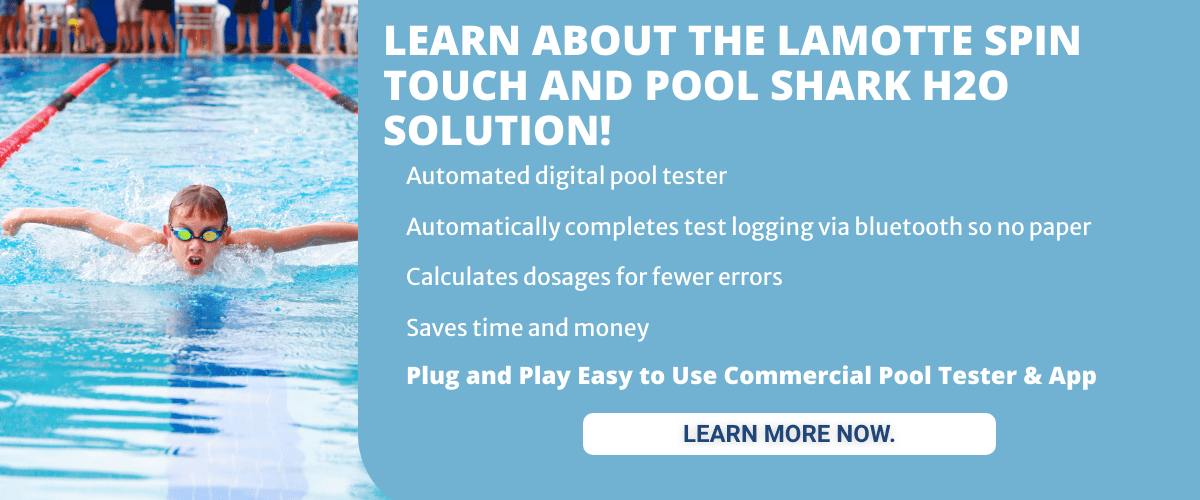Hey, Pool Pros. Boy, do we have a ton to worry about when taking care of commercial bodies of water! We have to check EVERYTHING to keep our pools open and operating–safely. This can include maintaining and repairing our equipment. Sometimes equipment needs to be replaced. We choose to go with modern technology for more efficiency and to make our jobs easier. We need to be safe, checking handrails and ladders. We need to check out the pool’s mastic and surface. We need to maintain proper water flow. We need life-saving devices such as buoys and shepherd's hooks in good condition. Most importantly, we need to manage and balance our water chemistry. This means test, test, test your water! We also need to keep logs of our tests.

When we look at water chemistry, we typically test for things like sanitizer, pH, alkalinity, cya (cyanuric acid), temperature, calcium hardness, and phosphates. But there is one thing you may not test that often. Whenever we add a chemical to our water, it only breaks down to a certain point. What is left over is known as dissolved solids. The measurement of these is called total dissolved solids (TDS). It is a measurement of all soluble matter in our water. How can we measure this? The concentration can be derived by measuring the electrical conductivity of our water. There are charged ions added that contribute to the water’s conductivity. There are also neutral contaminants, so these aren’t recorded by the conductivity method. The water is more “pure” the lower the conductance. Say what? Basically, lower can be better managed. Pool readings look good, but it’s still acting wacky. Check your TDS.
What contributes to the measurement of the total dissolved solids in our pools and spas? Things such as algicides, metal and stain control products, user waste, defoamers, and salt. Salt pools will have a much higher TDS (Total Dissolved Solids). When measuring TDS in a salt pool, test the salt reading. Then check your TDS level. Subtract the salt, measured in parts per million (PPM), from the total dissolved solids measurement and you will get your water’s accurate TDS level.
Chemicals aren’t the only culprit adding to your TDS. Nope. Water evaporation takes out some of that “pure” water we talked about before and leaves the total dissolved solids behind. TDS is kind of like figuring out the “age” of the water. The older the water is, the higher the TDS reading will be. This can also be caused by excessive chemical use. Take liquid chlorine for example. It inserts inert ingredients like (caustic) sodium hydroxide and salt (NaCl). As the water “ages” partially oxidized & unoxidized contaminants also go up. High TDS is “tired” water.
Why do we care about the measurement of total dissolved solids? Because as it increases, chemicals added have to “work harder” to dispense, rendering them less effective. So, you may be adding sanitizer, but what percentage is actually disinfecting? Unfortunately, this cannot be measured. So high TDS is a safety issue as well as requiring a higher chemical usage. The only way to get rid of high TDS is by draining some or all of the pool’s water. We should do this when the total dissolved solid reading gets to be 1500-2500 ppm above the fresh water’s reading. So, how do we measure it?
As we said before, we want to always go with the most up-to-date technology. This technology is pairing the Pool Shark H20 with the LaMotte Spin Lab and TDS tester. All you do to test regularly tested fields is take a small syringe of water and insert it into the fill line of the spin disc. A larger amount of water is needed for the TDS test. Put the spin disc into the LaMotte reader and during the brief 60 seconds it takes to get your water results, you can be testing the water’s TDS levels. The results of the spin water test are sent directly to any device you have the Pool Shark H20 App on. With over 30 optional fields to turn “on” or “off” on your app, total dissolved solids is one of them. You can manually add this result. Actually, you can manually add all of your results if you prefer to test using reagents. (Make sure they aren’t expired!)
Not only are accurate water test results sent quickly to your Pool Shark H20 App, but proper dosing instructions, customized for your various bodies of water, are also provided. The dosing uses the most accurate method of water testing known as the Langelier Saturation Index (LSI).
No more figuring numbers out on paper or in your head. This helps your water stay healthy while saving you time, energy, and money. Bosses LOVE saving money. We also need to log our water test results. The Pool Shark H20 App creates and stores digital water test logs. No need for old-fashioned paper logs anymore! No need to store boxes and boxes of old water tests ever again!
With customizable checklists, helpful reminders, and geo fencing, the Pool Shark H20 App helps you stay organized, accurate, efficient, and compliant. No one wants anyone getting sick or having to shut down their pool because of unbalanced water chemistry. Save time, and money AND make my job easier? Sign me up! Pool Shark H20 to the rescue! See you poolside!
More Commercial Pool Chemistry Resources
Free, vs Combined vs Total Chlorine - A Guide for Commercial or Public Pool Operators
Chlorine Shock vs Non-Chlorine Swimming Pool Shock
Why Being Able to Calculate the Volume of a Commercial or Public Swimming Pool is Important
Cyanuric Acid Levels in Swimming Pools
Ideal Alkalinity in Commercial Pools
Managing pH and Alkalinity in Pools
Commercial Pool Chlorine Management
Cyanuric Acid in Your Pool Too High? How to Remove Cyanuric Acid (Lower Pool Stabilizer)
Lowering Alkalinity in Swimming Pools
Reasons Your Public or Commercial Pool Water Could Be Cloudy
Muriatic Acid in Swimming Pools
How to Lower pH in Pools, Water Parks and Water Features
Does Chlorine Kill Poop in a Swimming Pool?
Why Pool Chemical Storage Cabinets are Important for Commercial Pools
Storing Pool Chemicals: What Commercial Pool Operators Need to Know



